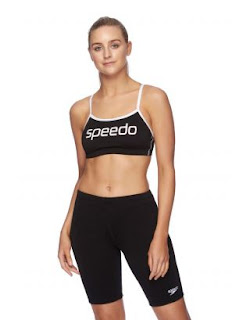Choosing the Best Triathlon Wetsuits
Triathlon wetsuits are the most critical piece of clothing for most triathletes. It's a personal choice as to which model you want to invest in, but there are certain criteria that every good suit must meet. Make sure you take the time to find out what these criteria are and find the best suits for your needs. The advice below will help you get started, so enjoy!
The making of a good triathlon wetsuit is a complex one, with many different factors that can affect it. When you choose the best triathlon wetsuits on the market, make sure to give this criteria heavy consideration.
Before we get into the specifics of the suit itself, let's first explain a little more about why you need to invest in one at all. First and foremost, an effective triathlon wetsuit will make sure that your body will retain as much heat as possible during long periods of time in a cold water environment. Without it, your body will begin to lose heat much more rapidly than necessary due to your body's natural reaction being to minimize any loss as quickly as possible. Yikes! You want your body to maintain as warm a liquid as possible, after all.
Secondly, a good triathlon wetsuit will also be able to protect your body from the impact of the water that will be thrown at it. In fact, it is advised that you use a wetsuit during any competitive activity like sprint swimming and cycling, as well as open water swimming; no one wants to get hit by a bunch of splashing water…the idea is not pleasant. Lastly, wetsuits also protect you from the wind in a way that regular swimsuits cannot.
Taking all these factors into consideration, getting the best triathlon wetsuit is essential if you want to be at your best when competing in a triathlon. The quality of your suit will be the largest factor in determining your performance. Of course, it is important that you compare all of the suits on the market, but make sure to invest in a high quality model as well.
The backbone of a good swimsuits for women & men is the material it is made out of. For this reason, choosing a polyester (or nylon) blend instead of a different kind entirely will save you quite some money and increase its durability; polyester and nylon both have been used for many years and have proven themselves to be very strong materials compared to others.
This durability is important because it is also the way in which the wetsuit provides its protection. The more durable your suit is, the less likely it will tear on you as you move, giving you a better chance at winning. The nylon and polyester fibers usually line the inside of a suit to keep you warm, but they also have a protective osmosis layer that keeps water out. The best triathlon wetsuits on the market will usually have these layers incorporated into them as well.
Just as important as the material used for construction of your suit are its external features. These are the things that you are going to focus on that will set your suit above the others. The most important aspect of these features is probably the thickness of the neoprene, though there are other things as well.
Specifically, it is advised that you get a wetsuit with a 3 mm thickness to maximize its protection against cold water and its ability to keep you warm. It will also protect you from any bumps and scrapes during your swim exercises. Furthermore, if you get a wet suit with 1 mm or 2 mm material, it will not be protective enough against wind and splashing water; you want to focus on getting something that will protect as much as possible.
In addition, the best triathlon wetsuit will also come with some other features. For example, you will most likely want to invest in one that has a good amount of stretch. It is advised that your suit does not be too tight and it should feel comfortable while you are wearing it. In addition to this, make sure the material is not too stiff or sticky; you do not want to get stuck inside of your suit during the race! Remember, being stuck in a wetsuit is never a pleasant situation!
There are some things that you will want in addition to your suit as well. For instance, you may want padding on the inner side (or "waist") of the leg area. This will help to distribute the pressure you put on your leg muscles during your bike exercises. In addition to this, it will also provide some padding for elbows and shoulders.
Finally, get a suit that does not have a zippered neck. This is important because a zipper means that water can enter easily. The best trick to this is to wear a hoodie or some other type of covering that keeps water out of your neck while you are on the bike; this makes sure that cool river water is not in contact with your delicate skin which could potentially cause physical harm as it cools down in these areas.
For more information, visit https://www.swimwearshack.com.au/




Comments
Post a Comment